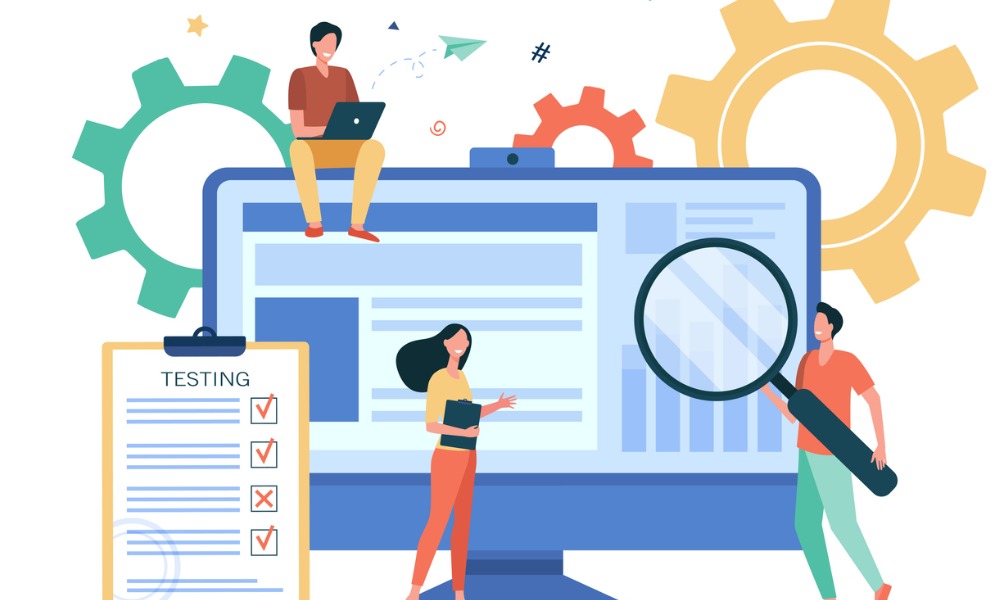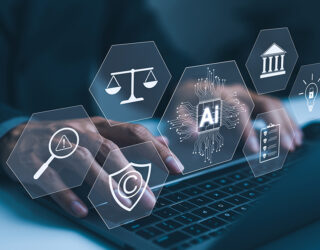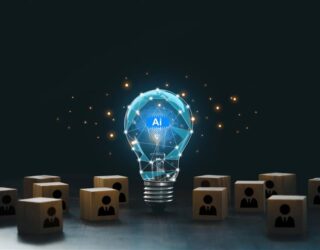EU legislation has chosen intellectual property law as the main way of protecting computer programs – an essential asset to increase the competitive edge of both European companies and their products worldwide. Protection is easy to obtain because it is sufficient for the software in question to be original; there is no need to register it and no further formalities are necessary. However, the scope of this protection does not extend to its functionalities, which explains why numerous similar applications are able to coexist peacefully on the market. The key to avoiding plagiarism lies in the existence of an independent development. Let’s take a look.
One of the principles that forms the backbone of intellectual property is the dichotomy of idea v. expression. Although it may appear simple in theory, in practice it is hugely complex. It is a crucial issue since intellectual property protection does not extend to idea, but rather to the way in which we express them. This is why you cannot speak of plagiarism when two creations simply share the same concept. Think, for example, of a smartphone. Almost all of them have a virtual assistant, a maps app, auto-rotate screen, etc. Are they plagiarizing each other? Not necessarily, if they have used their own developments to execute these features.
What the Intellectual Property Law does (and doesn’t) protect
In relation to software, the Intellectual Property Law (IPL) basically protects the source code, which is the form in which we express the idea we seek to execute. That is, “a sequence of instructions or indications intended for either direct or indirect use in a computer system to perform a function or task or obtain a specific result” (article 96.1 IPL). However, it does not protect the language used for programming (i.e., Java, C#, Python…).
The IPL also protects preparatory documentation, technical documentation and the user manuals for the program in question, obviously provided that they are original creations (article 96.1 paragraph two IPL). However, we should avoid misconceptions since, once again, it is the specific expression that is protected, not the ideas contained in such documents which should, in general, be treated as literary works.
In addition, the appearance of the graphical user interface (GUI) can be protected under the LPI as a graphical work, not as a computer program, if it is sufficiently original. In fact, provided that that it meets the novelty and individual character requirements, there is nothing to stop the GUI also being protected through legislation on registered or unregistered industrial designs, because it is ultimately the appearance of a product.
Finally, as far as the matter we are dealing with today, article 96.4 IPL expressly excludes the protection of functionalities as follows: “The ideas and principles underlying any of the elements of a computer program, including those underlying its interfaces, shall not be protected by copyright”. The reason for this exclusion is the need to safeguard competition. As the Court of Justice of the European Union (CJEU) held in its judgment of May 2, 2012 (case C-406/10), “to accept that the functionality of a computer program can be protected by copyright would amount to making it possible to monopolize ideas, to the detriment of technological progress and industrial development.”
The right to “browse” and the invalidity of contractual clauses that seek to prevent it
Moreover, the IPL itself recognizes that lawful users of a computer program have the so-called “right to browse”:
“The lawful user of a copy of the program shall be entitled to observe, study or verify its functioning, without prior authorization from the rightholder, in order to determine the ideas and principles which underlie any element of the program, provided he does so while performing any of the operations of loading, displaying, running, transmitting or storing the program that he is entitled to do (article 100.3 IPL).”
The CJEU has been even clearer when recognizing that a third party’s computer program can be studied, provided that we access it lawfully, in order to discover its functionalities and create an independent work that replicates them:
“The main advantage of protecting computer programs by copyright is that such protection covers only the individual expression of the work and thus leaves other authors the desired latitude to create similar or even identical programs provided that they refrain from copying” (Paragraph 41, case C-406/10).
Moreover, the right to browse is not contractually excludable. The IPL makes no reference to this, but article 8 of Directive 2009/24/EC on the legal protection of computer programs expressly establishes that any contractual provisions that are contrary to users’ right to browse shall be considered null and void. The CJEU ruled along these same lines when indicating that “Article 5(3) of Directive 91/250 seeks to ensure that the ideas and principles which underlie any element of a computer program are not protected by the owner of the copyright by means of a licensing agreement.”
The scope of the right to browse is much broader than envisaged, for example, in the Trade Secrets Law. In this case, in connection with reverse engineering, a product can also be observed, studied, dismantled or tested in order to replicate it. However, here it does appear that contractual restrictions that prevent the disclosure of the trade secret in question can be imposed.
The Spanish courts’ view: judgment by the Madrid Provincial Appellate Court of January 18, 2019
Although there is very little case law on software in Spain, the Madrid Provincial Appellate Court judgment of January 18, 2019 [ECLI:ES:APM:2019:2366] (final), clearly reflects the principles developed by the CJEU. In this case, the accusations referred to CRM software in the automotive industry which was claimed to have been plagiarized because several of its functionalities coincided. However, the Madrid Provincial Appellate Court confirmed the judgment handed down at first instance and dismissed the complaint in full, expressly awarding costs against the plaintiff.
In order to reach this conclusion, the Provincial Appellate Court was very mindful of the existence of an independent development, that is, the absence of the program’s source code which was, furthermore, due to a software-as-a-service model, which makes it considerably more difficult for final users to access the code:
“The entity… has written its own program to emulate the functionalities of the plaintiff’s program, which in itself does not involve an infringment of the plaintiff’s copyright in its program, when it is not even mentioned that the co-defendants have not had access to the source code nor decompiled the object code”.
The court insists that “the mere observation, study or verification of the functioning of a computer program without the owner’s prior authorization in order to determine the ideas and principles implicit in any element of the program does not in itself constitute an infringing act”. That is, a detailed analysis can be made of the program to which we have access in order to replicate its features.
Not surprisingly, the court confirmed, in unison with the CJEU, that mere ideas cannot be protected: “As literary works, the infringment of programs does not arise from the ideas that they may include in such documents but from the form in which they are expressed. As a result, the functionalities of the program, which are simply ideas, cannot be protected”. As we have said, it is a basic intellectual property principle that has a huge impact on the software industry in which innovation tends to arise precisely in the creation or improvement of the functionalities of the programs, that is, what they are capable of doing.
Finally, the Madrid Provincial Appellate Court also rejected the accusations of unfair imitation based on article 11 of the Unfair Competition Law. The court considered that the visual similarities between the programs were justified since the appearance of the program’s GUI that the plaintiff had implemented was due to the defendant’s style manual, that is, it had been personalized for the defendant, under its guidelines:
“If the terminology, external layout of the information and visual appearance of the image aim to please customers/users and adapt to something as elaborate as a style manual… if [the defendant] subsequently orders a program from a third party based on it, it is justifiable that numerous similarities with the previous one will necessarily appear, an aspect that the plaintiff appears to want to forget when it underscores the visual similarities in managing the two programs”.
In all cases, it is important to know that the visual appearance of the program cannot be protected via articles 95 et seq. of the IPL (computer programs), and instead has to be protected via the standard rules envisaged in article 10 IPL for original works.
CONCLUSIONS
Lawsuits involving plagiarism of computer programs are few and far between, perhaps due, in part, to the predominance of an open culture among developers. It is not by chance that the most “relaxed” views in connection with intellectual property occur in this sector, indeed by the 80s, through the GNU Project. Since then, open source software licenses have proliferated, with the aim of sharing innovation within the community of developers.
In fact, Directive 2009/24/EC on the legal protection of computer programs, imposes considerable limitations on rightholders with a view to encouraging competition. However, as we have said, the small number of lawsuits in the sector means that it has not been possible to put to the test the real link between these limits and the exception, as we have seen, of the right to study, or “right to browse”.
Cristina Mesa Sánchez
Intellectual Property Department






